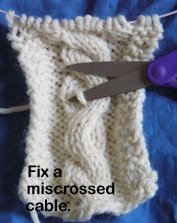I saw a very nice macro shot of a butterfly on someone's Instagram feed. The antennae were much larger around near the tips, and a lighter color, too. I wondered why.................
This is not the butterfly I saw, which I have no right to copy or share. This one is in Wikimedia commons, with a "creative commons" license, and so is ok for me to share here.
You can see this butterfly's antennae are thicker and paler near the tips. (Note also its coiled-up-in-a-circle probocsis.)
By Quartl (Own work) [CC BY-SA 3.0 (http://creativecommons.org/licenses/by-sa/3.0)], via Wikimedia Commons
Hooray for the internet -- I can ethically show you an image that illustrates the stimulus for my curiosity, and I can go looking for "function butterfly antennae." I found this butterfly anatomy page.
I learned that butterfly antennae originate between their eyes (if you click through, and scroll down to "antennae," you'll see a very clear photo showing just this). I knew butterfly antennae were on their heads, of course, but between their eyes? Did not know that............
I also learned that their antennae are absolutely plastered with thousands of volatile chemical sensors. Of different kinds, including differences between what's on the tips of the antennae and what's elsewhere on the antennae...........
Butterflies apparently have exquisite senses of smell, which they use to find mates, find food, find good places to lay eggs, help them migrate, even, maybe. I was thinking butterfly antennae had something to do with sense of smell, but had no idea...............
Then I read on down the anatomy page, and came to this, which surely includes the weirdest thing I've learned today, if not this week:
Proboscis
The proboscis consists of a pair of interlocking c-section channels that when linked together form a tube, much like a drinking straw. This tube can be coiled up like a spring for storage, or extended to enable the butterfly to reach deep into flowers to suck up nectar. If the proboscis gets clogged with sticky fluids the 2 sections can be uncoupled and cleaned.
All righty then. I don't suppose this is the only thing I've learned today, but I suspect it's the most memorable.
Now I'm wondering exactly how that works -- how does it stick together when necessary, and yet come apart when desirable? Imagining some sort of teeny tiny velcro........ One could get lost for a long time, following one shiny new idea, which leads to another, and another, and another............
Ok, I had to go look. Here is more info about this whole two-piece proboscis zipping concept.
.

















No comments:
Post a Comment